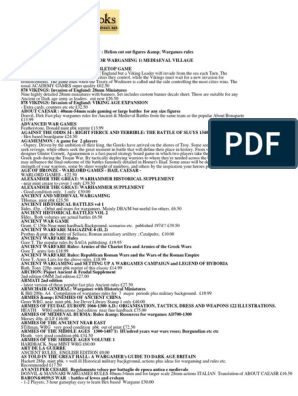100% found this document useful (1 vote)
2K views25 pagesNo White Feather - Seán O'Foghlú
Although he could well be described as a jack of all trades, Seán Ó’Foghlú is really a born soldier, and since the frosty morning in March 1960 when he signed his allegiance to the Defence Forces on the dotted line, he has served his country dutifully.
Though now retired and a member of the IUNVA (Irish UN Veterans’ Association), he is still a soldier at heart. In No White Feather, his debut book which has been a labour of love for many years, he recounts his years of military service in the Irish Army and his UN service in the Belgian Congo between 1960 and 1964 with a mixture of fondness, adventure and grief at the loss of many a fine young man.
Drawing on his personal experiences, letters and diaries, Seán Ó’Foghlú offers a unique insight into the harsh realities of daily life for the Irish soldier during those uncertain and tumultuous years in Irish military history. Going beyond the battles, he shines a light on the true definition of oversees service for young Irish men, many of whom had never before set foot outside their home country.
As a proud member of A Company, 35th Irish Battalion who served with ONUC in 1961, Ó’Foghlú witnessed many important military events, including the infamous Battle of Jadotville. His experiences provide a must-read account for anyone interested in the Irish Defence Forces or, indeed, Irish military history. No White Feather is sure to provide you with a greater understanding of the ethos that pervades the Irish Army to this day, as well as the camaraderie and bravery that has always enabled our soldiers to ‘grasp the nettle of responsibility when the chips were down’. This is a story of adventure, friendship and the honourable tradition of the Irish Army.
For orders please contact info@bookrepublic.ie
Uploaded by
Book Republic PublishersCopyright
© © All Rights Reserved
We take content rights seriously. If you suspect this is your content, claim it here.
Available Formats
Download as PDF or read online on Scribd
100% found this document useful (1 vote)
2K views25 pagesNo White Feather - Seán O'Foghlú
Although he could well be described as a jack of all trades, Seán Ó’Foghlú is really a born soldier, and since the frosty morning in March 1960 when he signed his allegiance to the Defence Forces on the dotted line, he has served his country dutifully.
Though now retired and a member of the IUNVA (Irish UN Veterans’ Association), he is still a soldier at heart. In No White Feather, his debut book which has been a labour of love for many years, he recounts his years of military service in the Irish Army and his UN service in the Belgian Congo between 1960 and 1964 with a mixture of fondness, adventure and grief at the loss of many a fine young man.
Drawing on his personal experiences, letters and diaries, Seán Ó’Foghlú offers a unique insight into the harsh realities of daily life for the Irish soldier during those uncertain and tumultuous years in Irish military history. Going beyond the battles, he shines a light on the true definition of oversees service for young Irish men, many of whom had never before set foot outside their home country.
As a proud member of A Company, 35th Irish Battalion who served with ONUC in 1961, Ó’Foghlú witnessed many important military events, including the infamous Battle of Jadotville. His experiences provide a must-read account for anyone interested in the Irish Defence Forces or, indeed, Irish military history. No White Feather is sure to provide you with a greater understanding of the ethos that pervades the Irish Army to this day, as well as the camaraderie and bravery that has always enabled our soldiers to ‘grasp the nettle of responsibility when the chips were down’. This is a story of adventure, friendship and the honourable tradition of the Irish Army.
For orders please contact info@bookrepublic.ie
Uploaded by
Book Republic PublishersCopyright
© © All Rights Reserved
We take content rights seriously. If you suspect this is your content, claim it here.
Available Formats
Download as PDF or read online on Scribd
/ 25

























































































